Author: g_fasol
-

Gerhard Fasol, Ludwig Boltzmann 179th birthday, 20 February 2023 (US/Japan session)
Entropy. Energy. Gerhard Fasol, Chair and Producer. https://www.youtube.com/@Ludwig-Boltzmann?sub_confirmation=1 contact. enquiries. registration. Copyright (c) 2023 Eurotechnology Japan KK All Rights Reserved
-
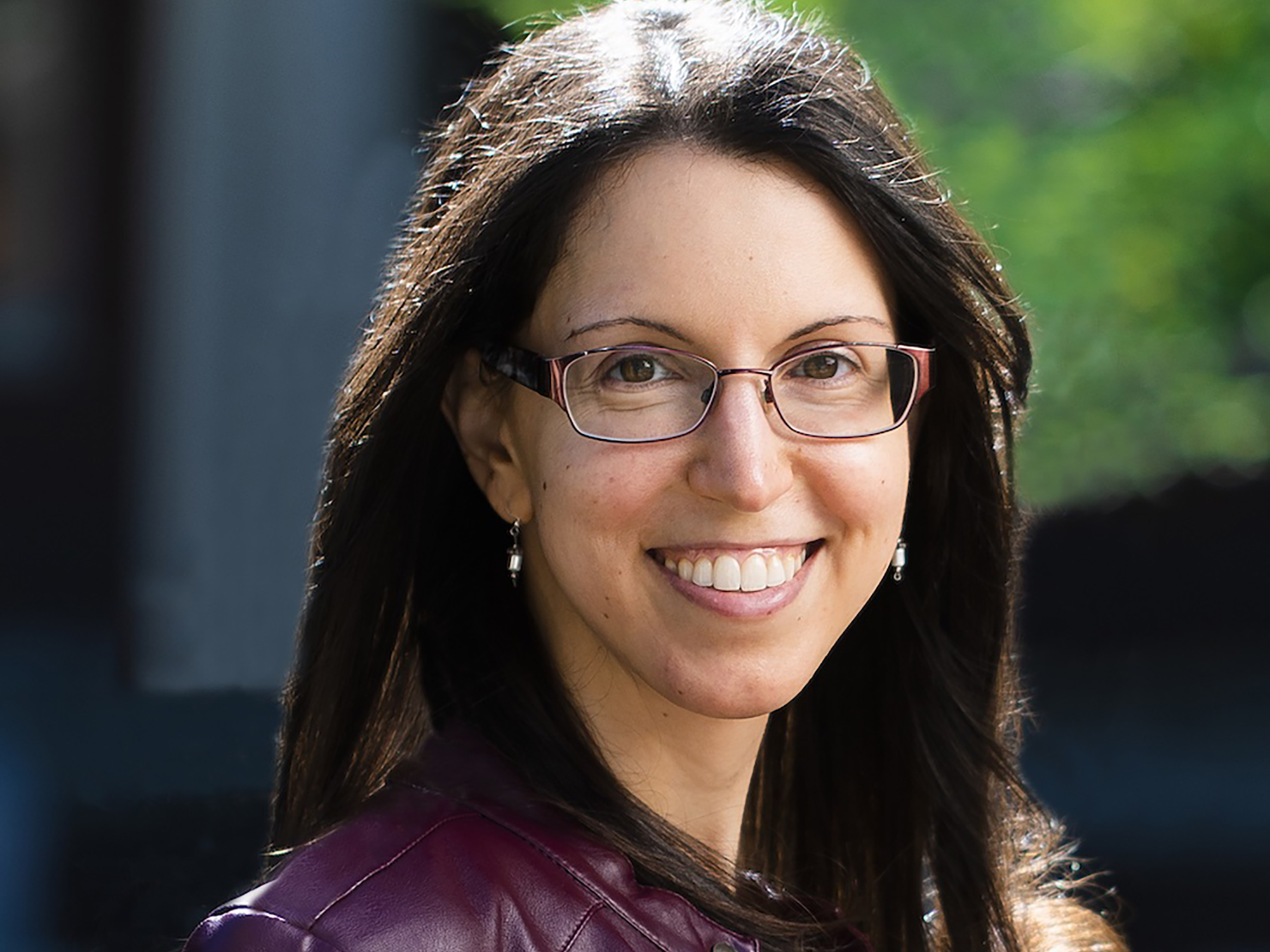
Nicole Yunger Halpern, Quantum Steampunk: The physics of yesterday’s tomorrow
Entropy. Energy. Gerhard Fasol, Chair and Producer. Monday 20 Feb / Tuesday 21 Feb 2023 (179th anniversary of Ludwig Boltzmann’s birthday) Nicole Yunger Halpern: Quantum Steampunk: The physics of yesterday’s tomorrow Abstract: Steampunk is a genre of literature, art, and film that juxtaposes futuristic technologies with Victorian settings. This fantasy is coming to life at…
-
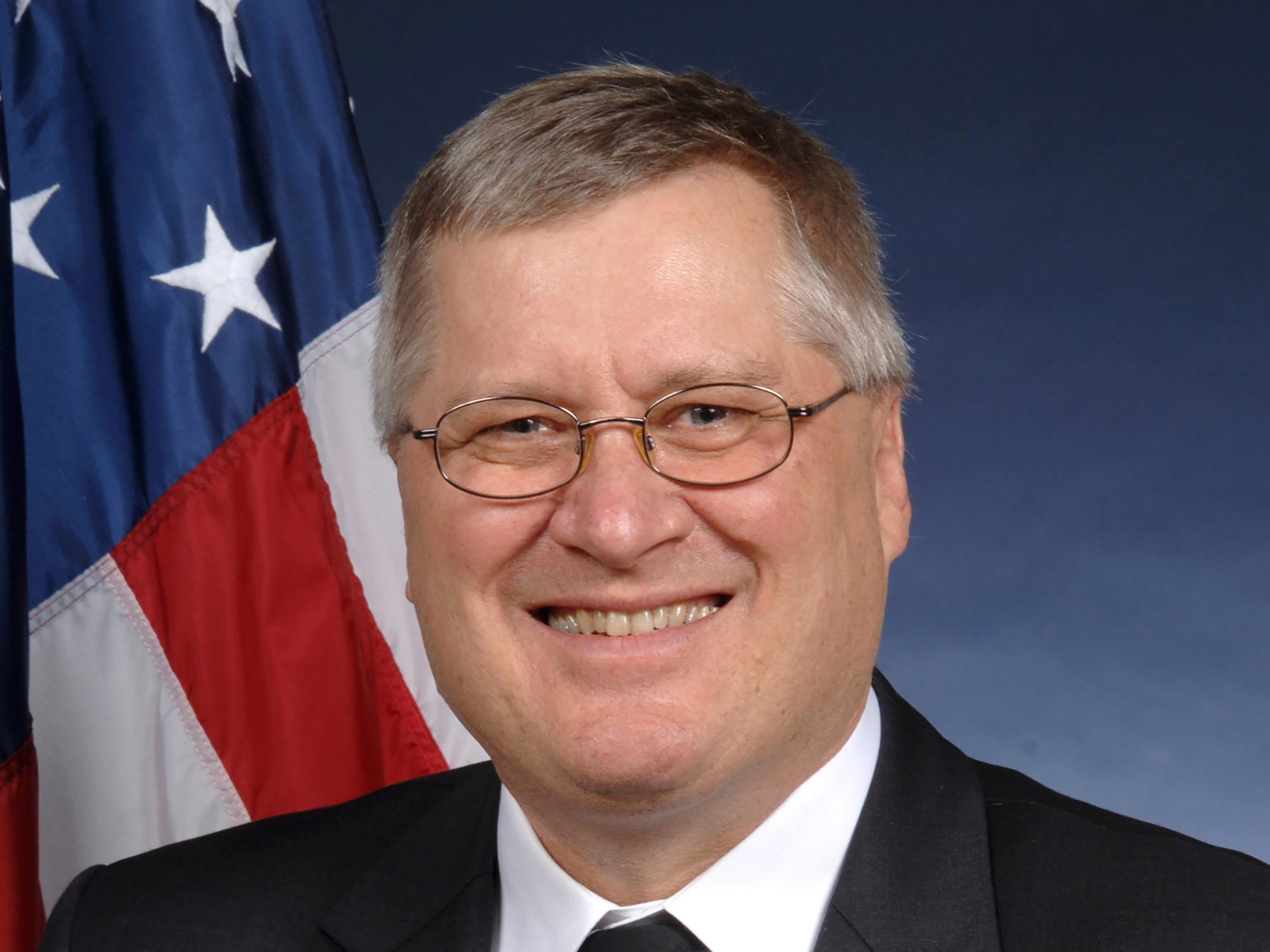
Charles W. Clark, Vortices of light and particles, Ludwig Boltzmann Forum 20 February 2023
Entropy. Energy. Gerhard Fasol, Chair and Producer. Monday 20 Feb 2023 (179th anniversary of Ludwig Boltzmann’s birthday) Charles W Clark: Joint Quantum Institute, National Institute of Standards and Technology and University of Maryland Abtract: The vortex theory of the atom had some currency in the 19th century, due to conservation properties of vorticity in fluids…
-

Gerhard Fasol, 179th anniversary of Ludwig Boltzmann’s birthday 20 February 2023 (UK/Europe/India/Japan session)
Entropy. Energy. Gerhard Fasol, Chair and Producer. Monday 20 Feb 2023 (179th anniversary of Ludwig Boltzmann’s birthday) contact. enquiries. registration. Copyright (c) 2023 Eurotechnology Japan KK All Rights Reserved
-
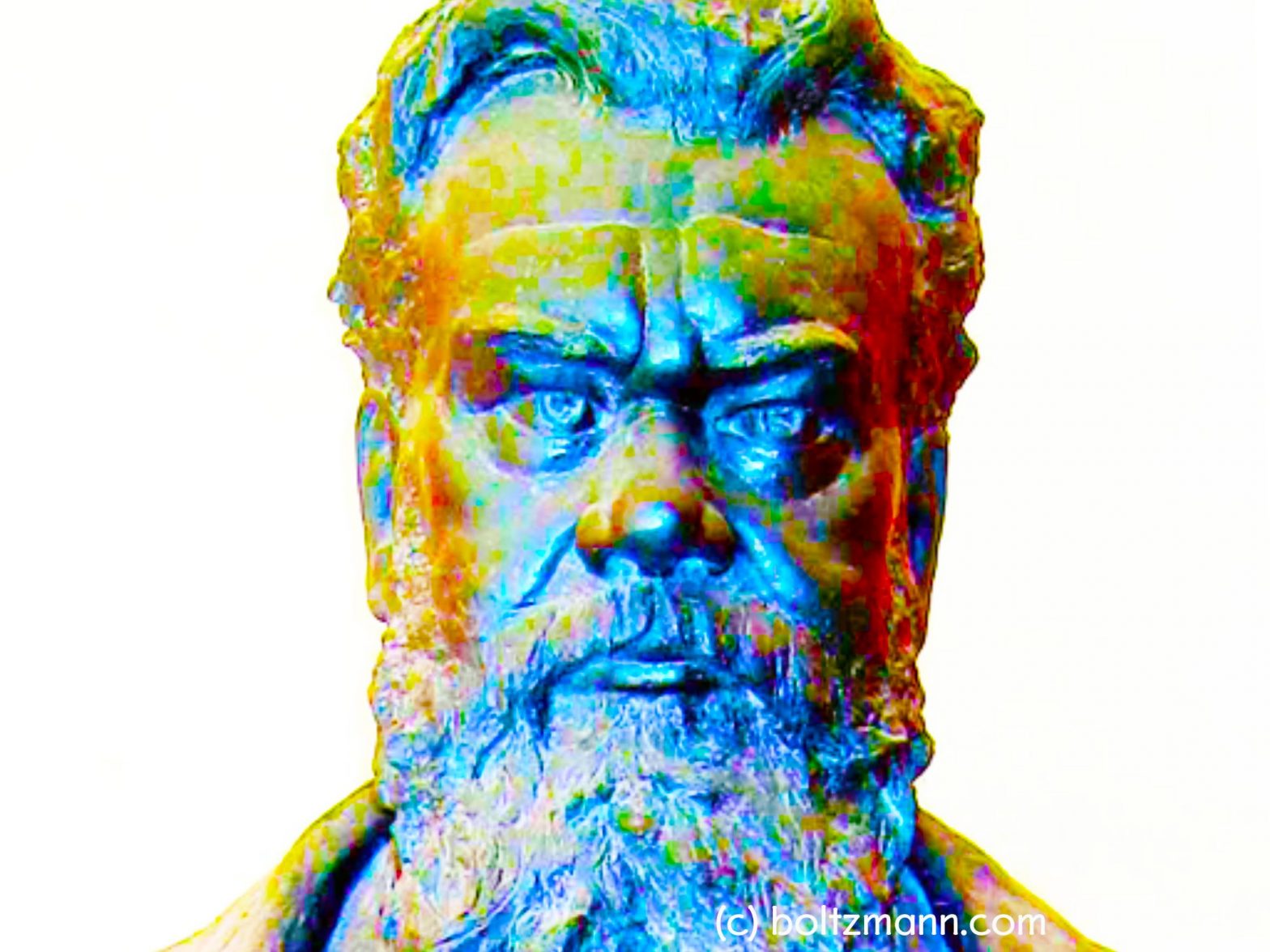
Ludwig Boltzmann Forum 20/21 February 2023
Entropy. Energy. Gerhard Fasol, Chair and Producer. Monday 20 Feb / Tuesday 21 Feb 2023 (179th anniversary of Ludwig Boltzmann’s birthday) Program (zoom) UK/Europe/India/Japan session: Gerhard Fasol & Charles Clark please pre-register here for the UK/Europe/India/Japan session to receive the URL to join the online conference US/Japan session: Gerhard Fasol & Nicole Yunger Halpern please…
-
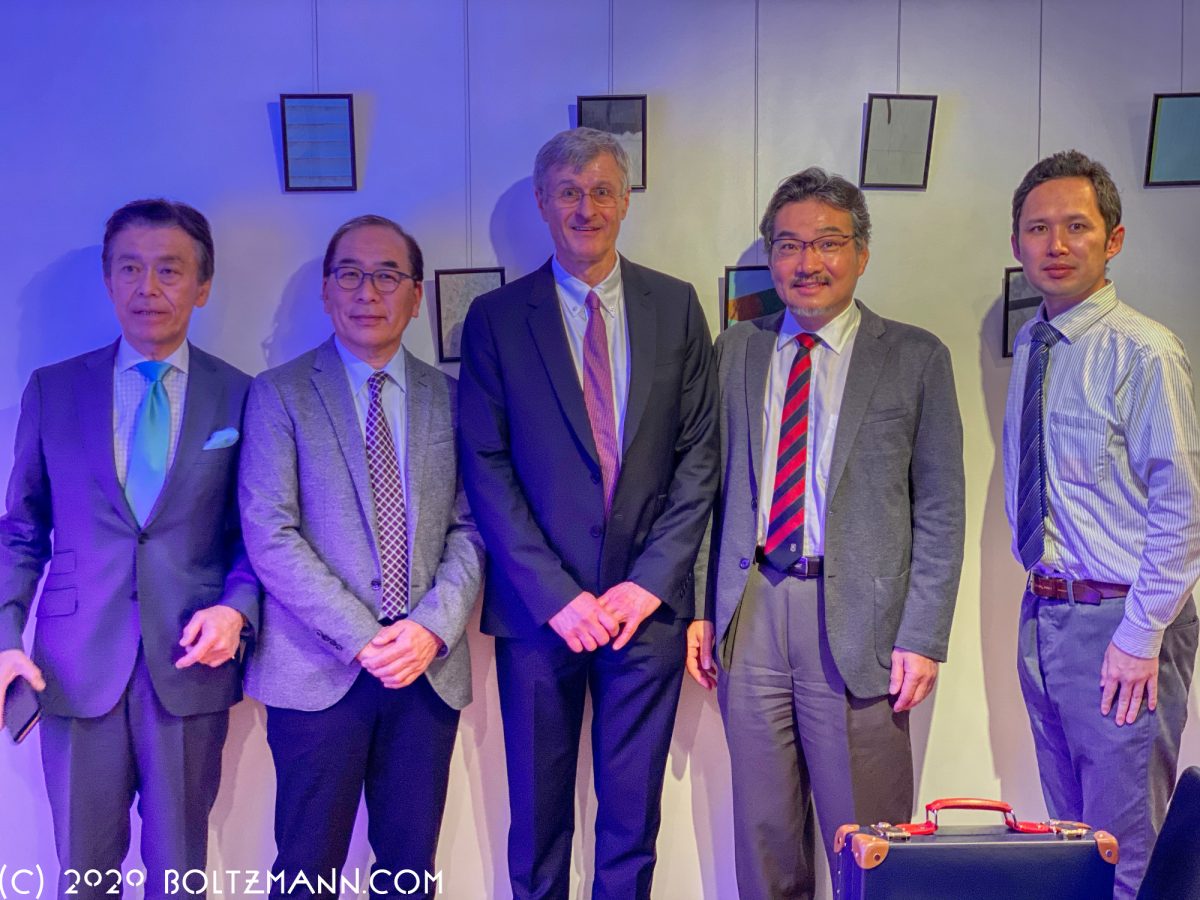
12th Ludwig Boltzmann Forum Tokyo 2020
Energy. Entropy. Leadership. Gerhard Fasol, Chair and Producer. 12th Ludwig Boltzmann Forum 2020, Thursday 20 February 2020 at the Embassy of Austria, Tokyo. Program click on links below to read summaries of keynote talks and see photographs Welcome by the Ambassador of Austria, Hubert Heiss. Gerhard Fasol, CEO and Founder, Eurotechnology Japan KK, Guest-Professor Kyushu…
-
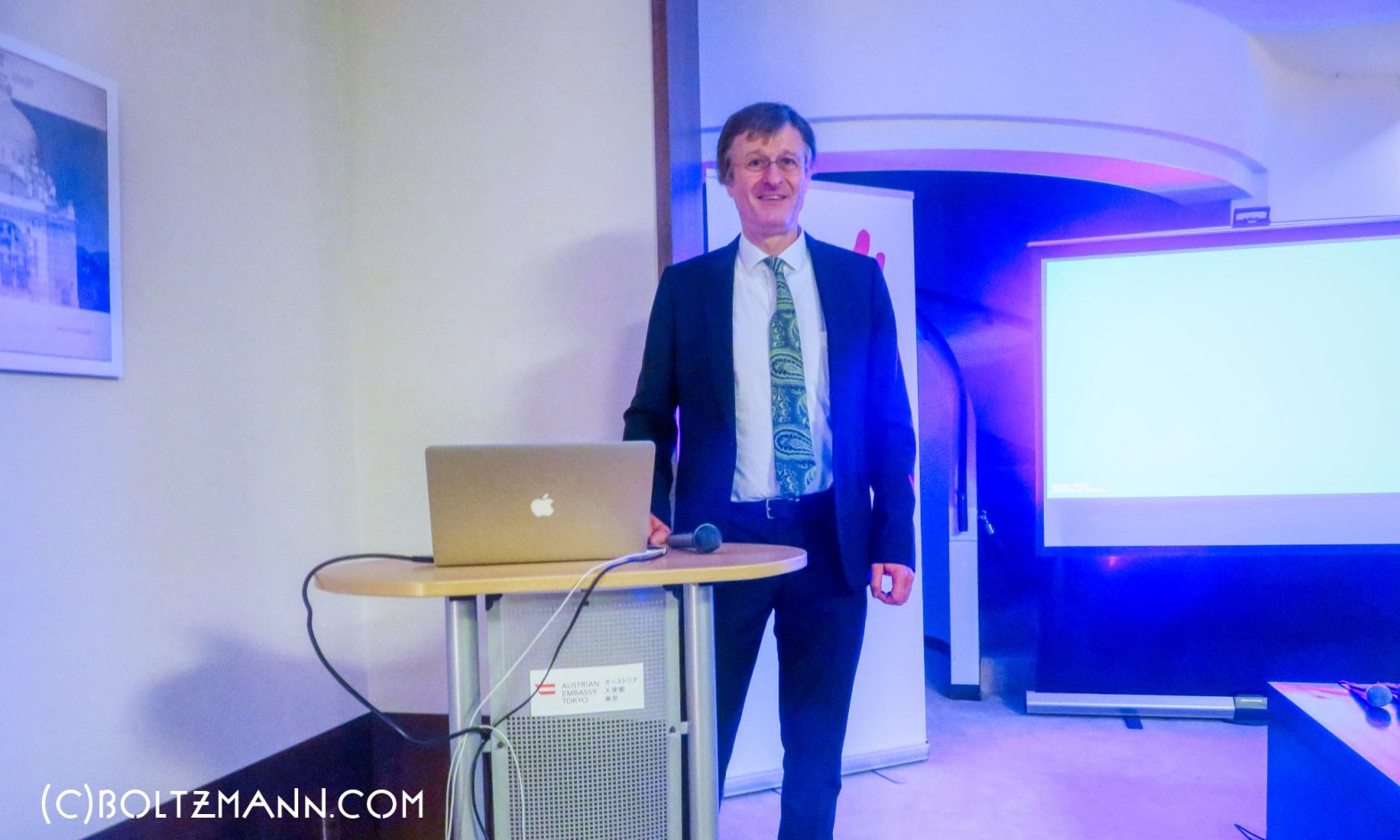
Gerhard Fasol: today’s agenda. Entropy, information and Ludwig Boltzmann – and Japan’s economic growth
Gerhard Fasol: today’s agenda. Entropy, information and Ludwig Boltzmann – and Japan’s economic growth, 12th Ludwig Boltzmann Forum, 20 February 2020 Gerhard Fasol, CEO , Eurotechnology Japan KK. Guest Professor, Kyushu University, former faculty Cambridge University, and Trinity College, and Tokyo University Purpose of the Ludwig Boltzmann Forum Today’s program: Some of Japan’s top issues…
-
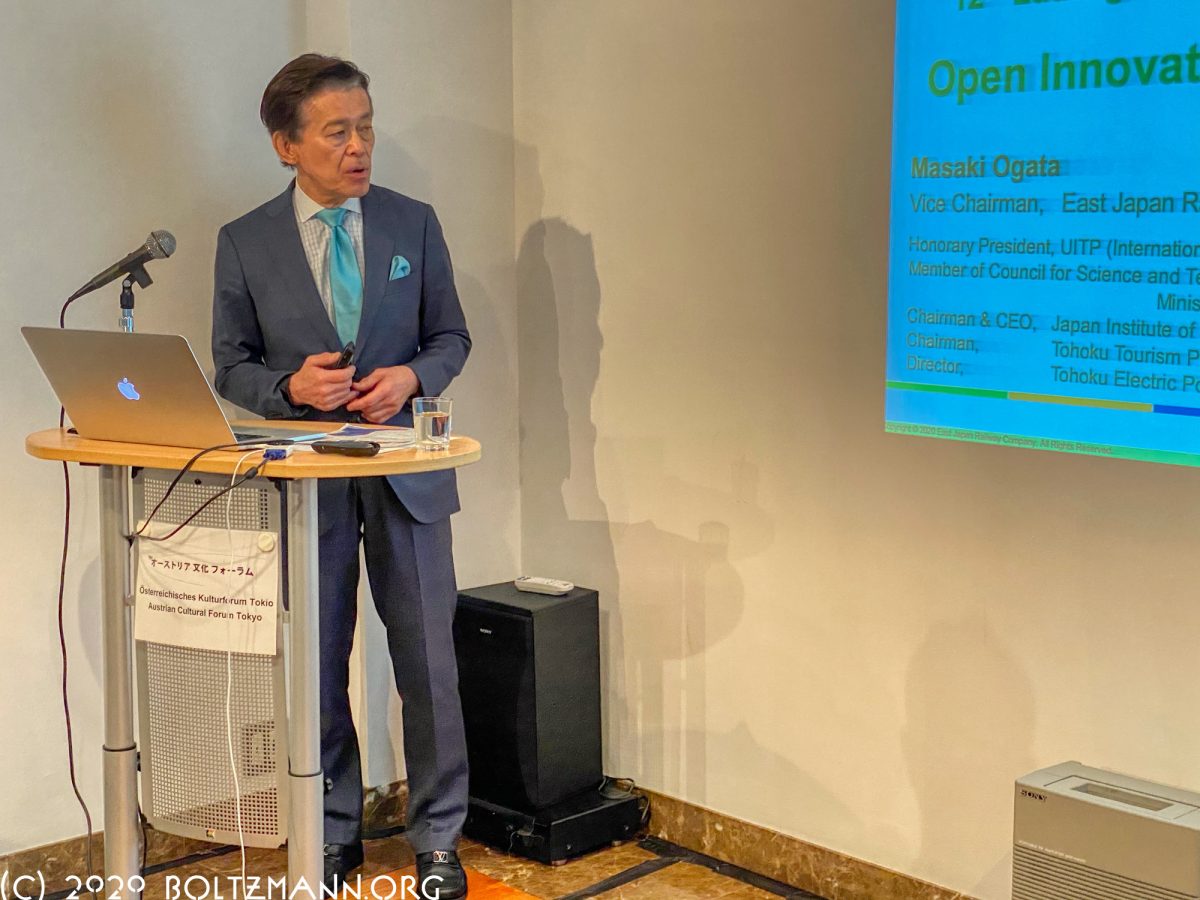
Masaki Ogata: Open Innovation and MaaS of JR East
Masaki Ogata: Open Innovation and MaaS of JR East 12th Ludwig Boltzmann Forum, 20 February 2020 Summary by Gerhard Fasol Masaki Ogata East Japan Railway Company, Board Director and Vice-Chairman, Executive Vice President of Technology & Overseas Related Affairs Honorary President, UITP (International Association of Public Transport) Member of Council for Science and Technology, Chairperson…
-
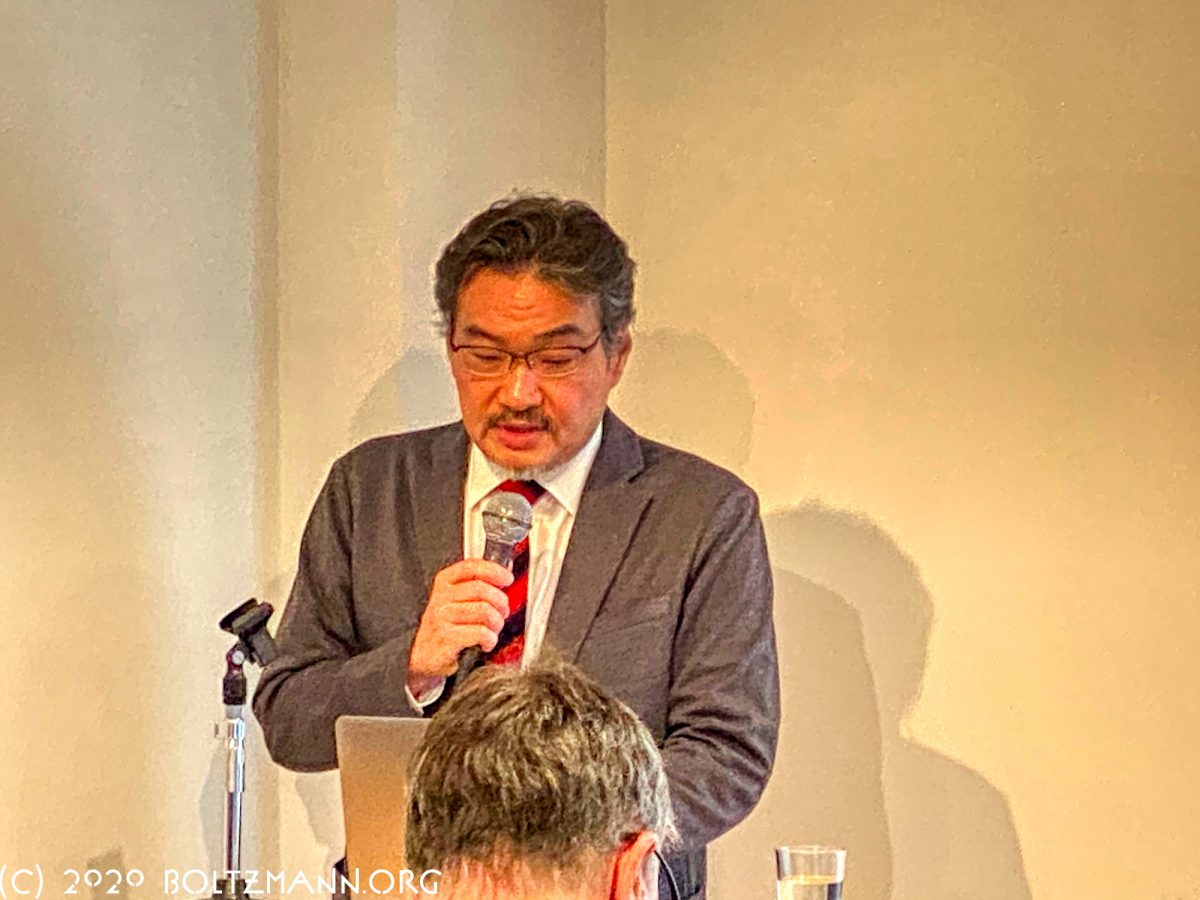
Masashi Yanagisawa: Solving the Mysteries of Sleep: Toward the Real-World Implementation of Sleep Science
Masashi Yanagisawa: Solving the Mysteries of Sleep: Toward the Real-World Implementation of Sleep Science, 12th Ludwig Boltzmann Forum, 20 February 2020 Masashi Yanagisawa, International Institute for Integrative Sleep Medicine (WPI-IIIS), Director, University of Tsukuba, Professor Professor Yanagisawa is founder and Director of the International Institute for Integrative Sleep Medicine (IIIS), which he founded and is…
-
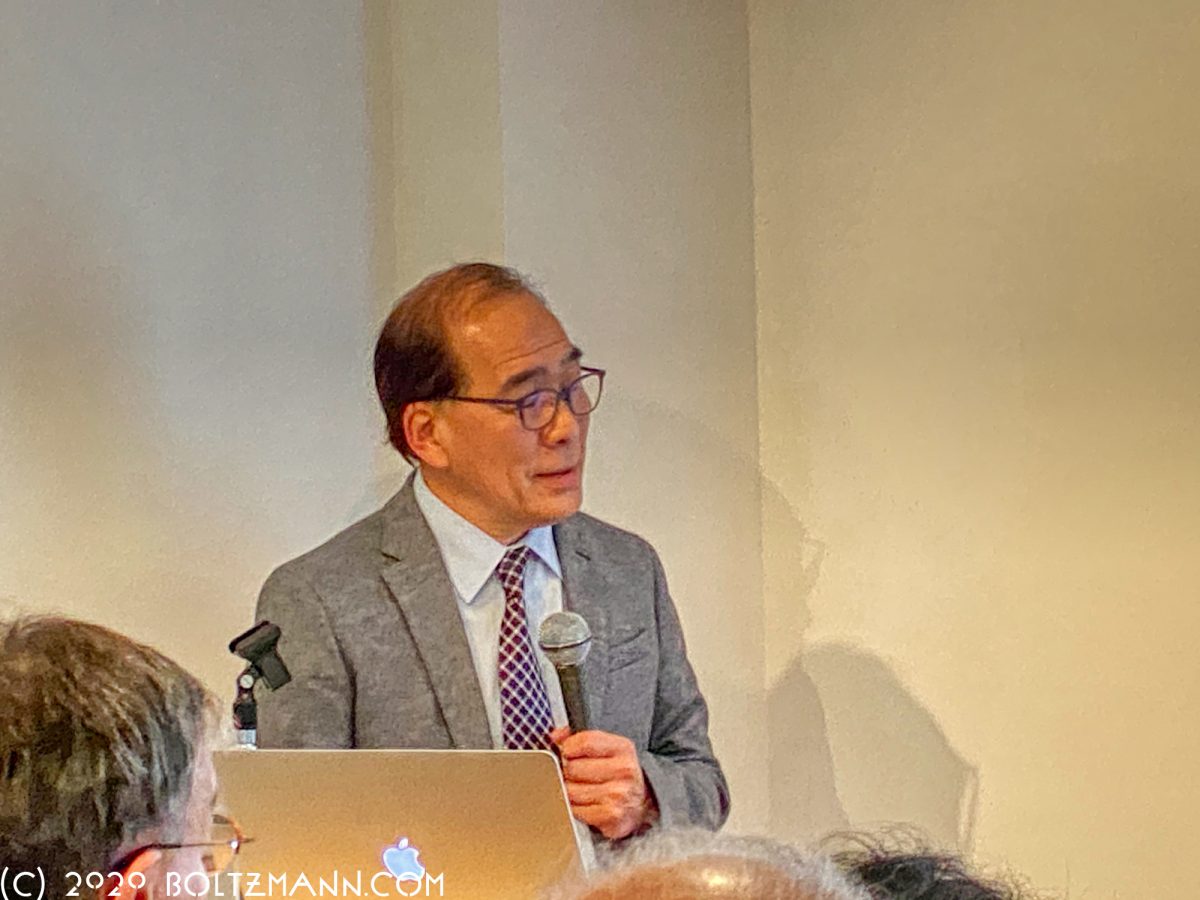
Hiromitsu Nakauchi: Stem cell technology and its potential for future medicine
Hiromitsu Nakauchi: Stem cell technology and its potential for future medicine, Ludwig Boltzmann Forum, 20 February 2020 Hiromitsu Nakauchi, Stanford University School of Medicine, Professor, and University of Tokyo, Project Professor, Divn. of Stem Cell Therapy, Institute of Medical Science Summary by Gerhard Fasol Summary: solving the shortage of organ donors and immune rejection with…
-
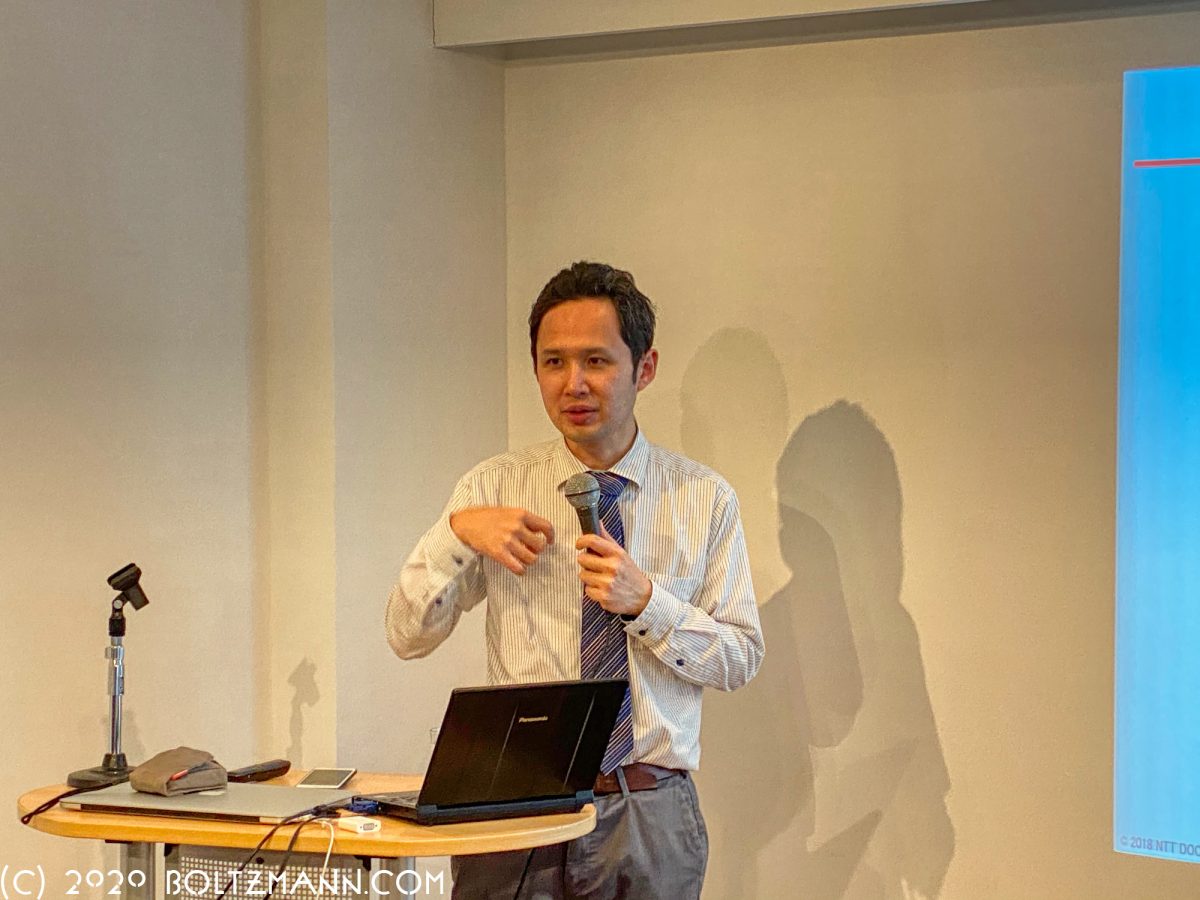
Satoshi Nagata: NTT DOCOMO’s activity towards 5G Evolution and 6G
From 5G to 6G, 12th Ludwig Boltzmann Forum, 20 February 2020 Satoshi Nagata, NTT DOCOMO Inc., 3GPP TSG RAN Vice Chairman Summary by Gerhard Fasol Summary: Docomo towards 5G evolution and 6G Satoshi Nagata gave us the first ever external talk by NTT DOCOMO about 6G. DOCOMO started 5G Services in Japan on March 25,…
-
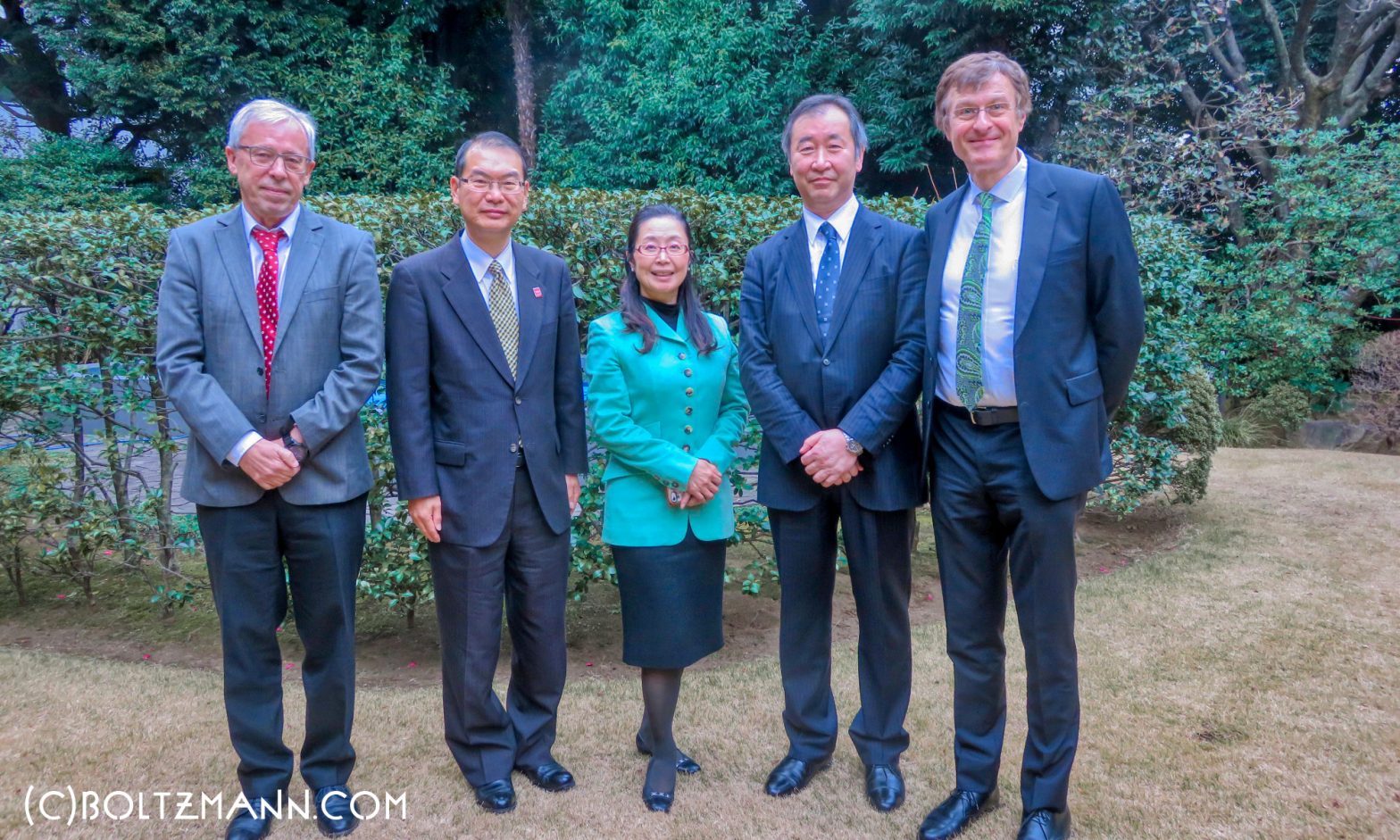
11th Ludwig Boltzmann Forum Tokyo 2019
Energy. Entropy. Leadership. Gerhard Fasol, Chair 11th Ludwig Boltzmann Forum 2019, Wednesday 20 February 2019 at the Embassy of Austria, Tokyo. Program Welcome by the Ambassador of Austria, Hubert Heiss. Gerhard Fasol, CEO and Founder Eurotechnology Japan K, Guest-Professor Kyushu University, former faculty Cambridge University and Tokyo University, Past-Fellow Trinity College Cambridge “Today’s agenda. Entropy,…
-

Gerhard Fasol: agenda of the 11th Ludwig Boltzmann Forum. Entropy, information and Ludwig Boltzmann
Entropy, information and Ludwig Boltzmann. 11th Ludwig Boltzmann Forum 20 February 2019 Gerhard Fasol, Eurotechnology Japan KK, Founder and CEO. Guest Professor, Kyushu University. Former tenured faculty at Cambridge University and Tokyo University, Past Fellow Trinity College Cambridge. Agenda of the 11th Ludwig Boltzmann Forum Purpose of the Ludwig Boltzmann Forum is to bring outstanding…
-
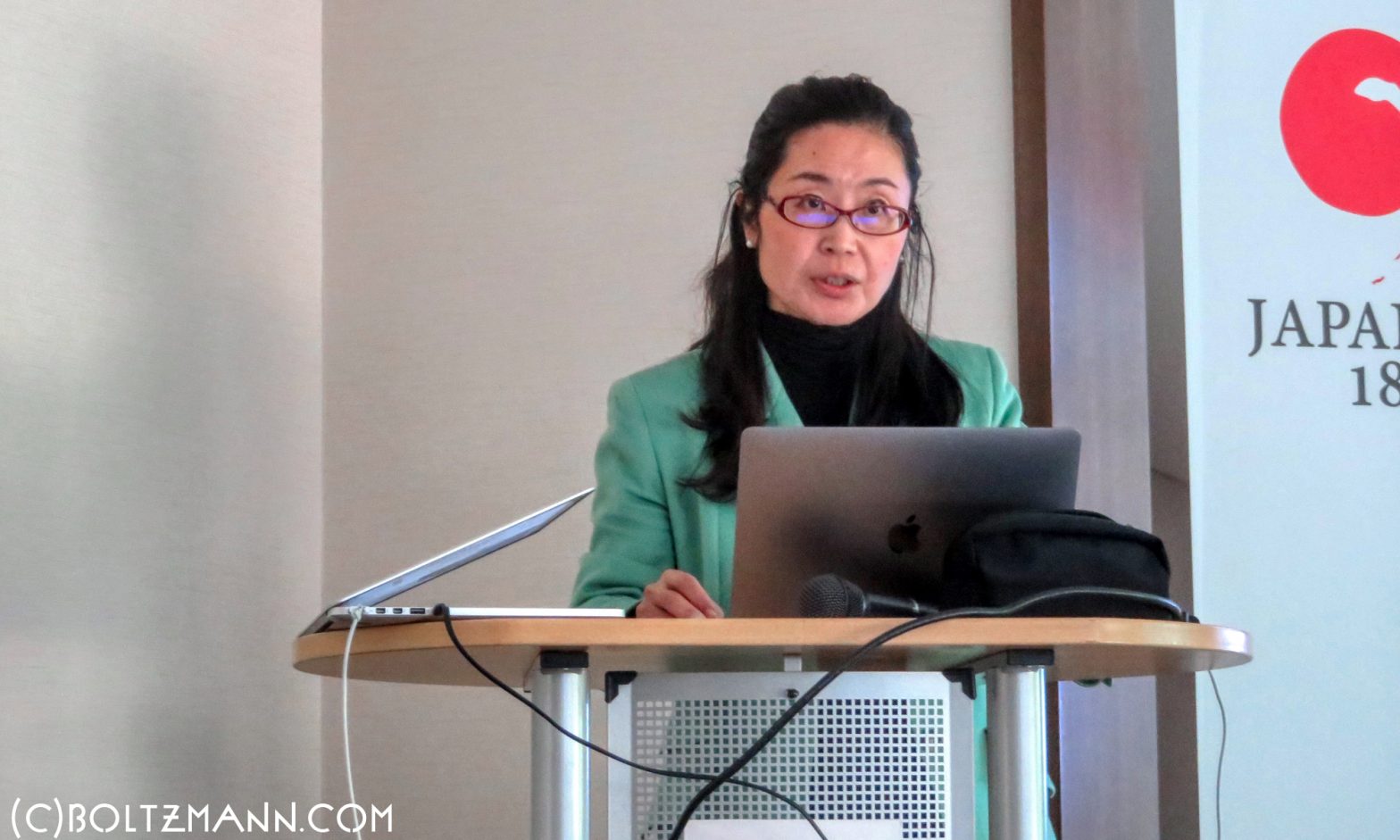
Noriko Osumi: Towards understanding the mystery of neuro-development disorders: lessons from animal models
Towards understanding the mystery of neuro-development disorders: lessons from animal models, 11th Ludwig Boltzmann Forum, 20 February 2019 Noriko Osumi, Tohoku University, Vice-President. Professor of Neuroscience. Executive Director, United Centers for Advanced Research and Translational Medicine (ART). Director of the Center for Neuroscience. summary written by Gerhard Fasol The Autism enigma Autism spectrum disorder (ASD)…
-
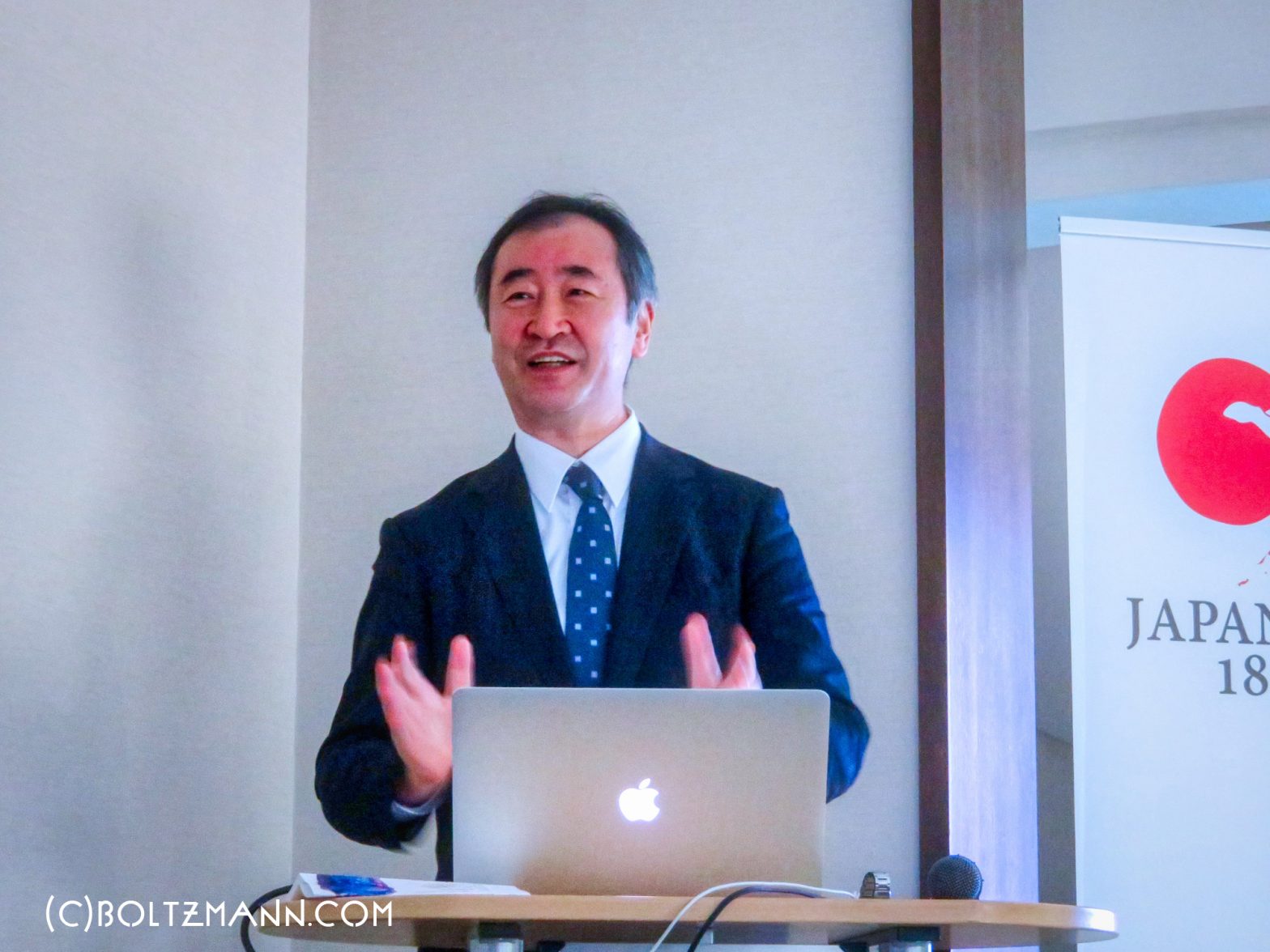
Takaaki Kajita: Neutrino research in Kamioka and the status of Japanese basic science with large research infrastructures
Neutrino research in Kamioka and the status of Japanese basic science with large research infrastructures, 11th Ludwig Boltzmann Forum, 20 February 2019 Takaaki Kajita, University of Tokyo, Professor and Director of the Institute for Cosmic Ray Research. Nobel Prize in Physics 2015 for the discovery of neutrino oscillations Summary of Professor Takaaki Kajita’s keynote talk…
-
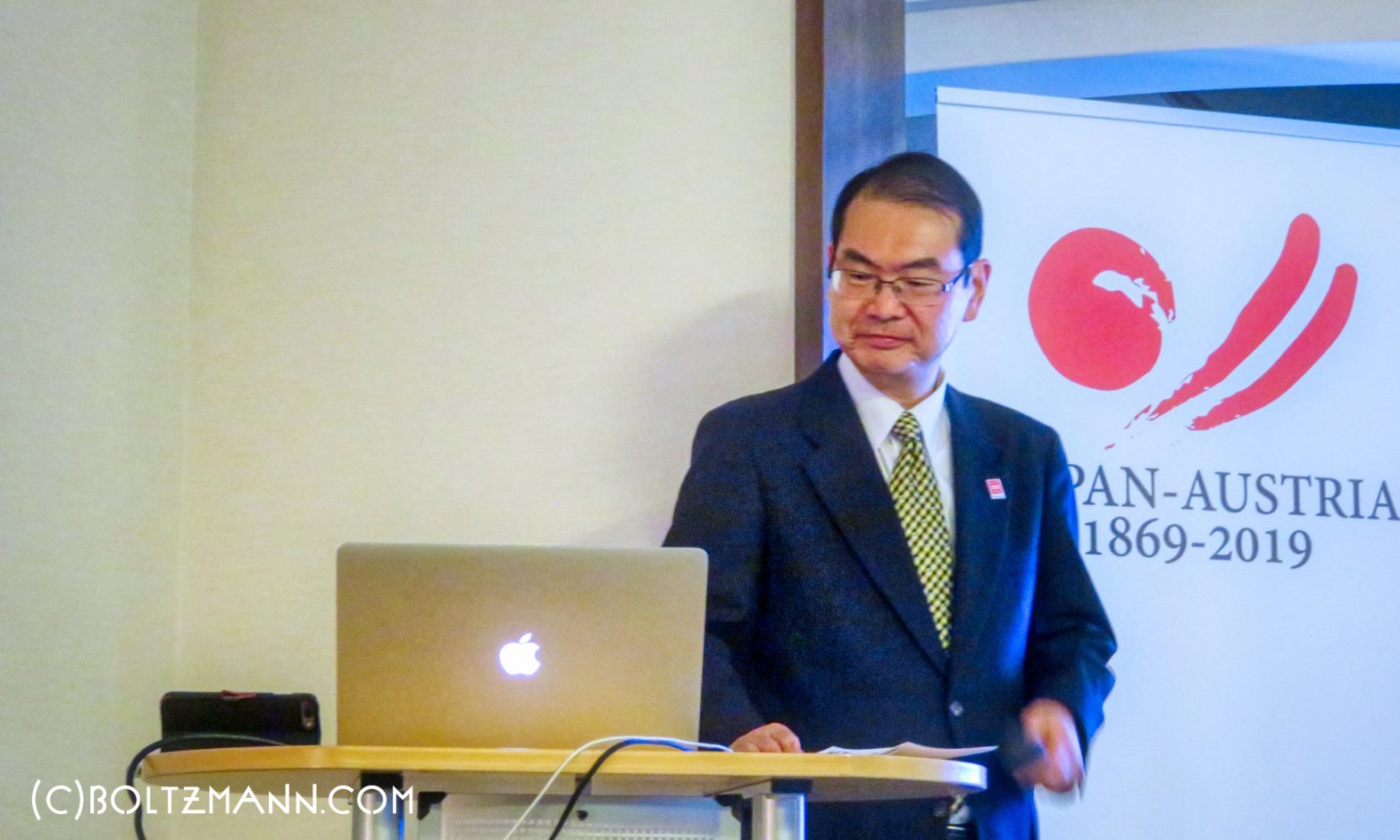
Hiroshi Nakamura: NTT DOCOMO driving digital transformation in the 5G era – co-create new values with partners
NTT DOCOMO driving digital transformation in the 5G era – co-create new values with partners, 11th Ludwig Boltzmann Forum 20 February 2019 Hiroshi Nakamura, NTT DOCOMO Inc. Executive Vice-President & CTO, Member of the Board of Directors, Executive General Manager of R&D Innovation Division Summary written by Gerhard Fasol Sharing our future around 202x –…
-
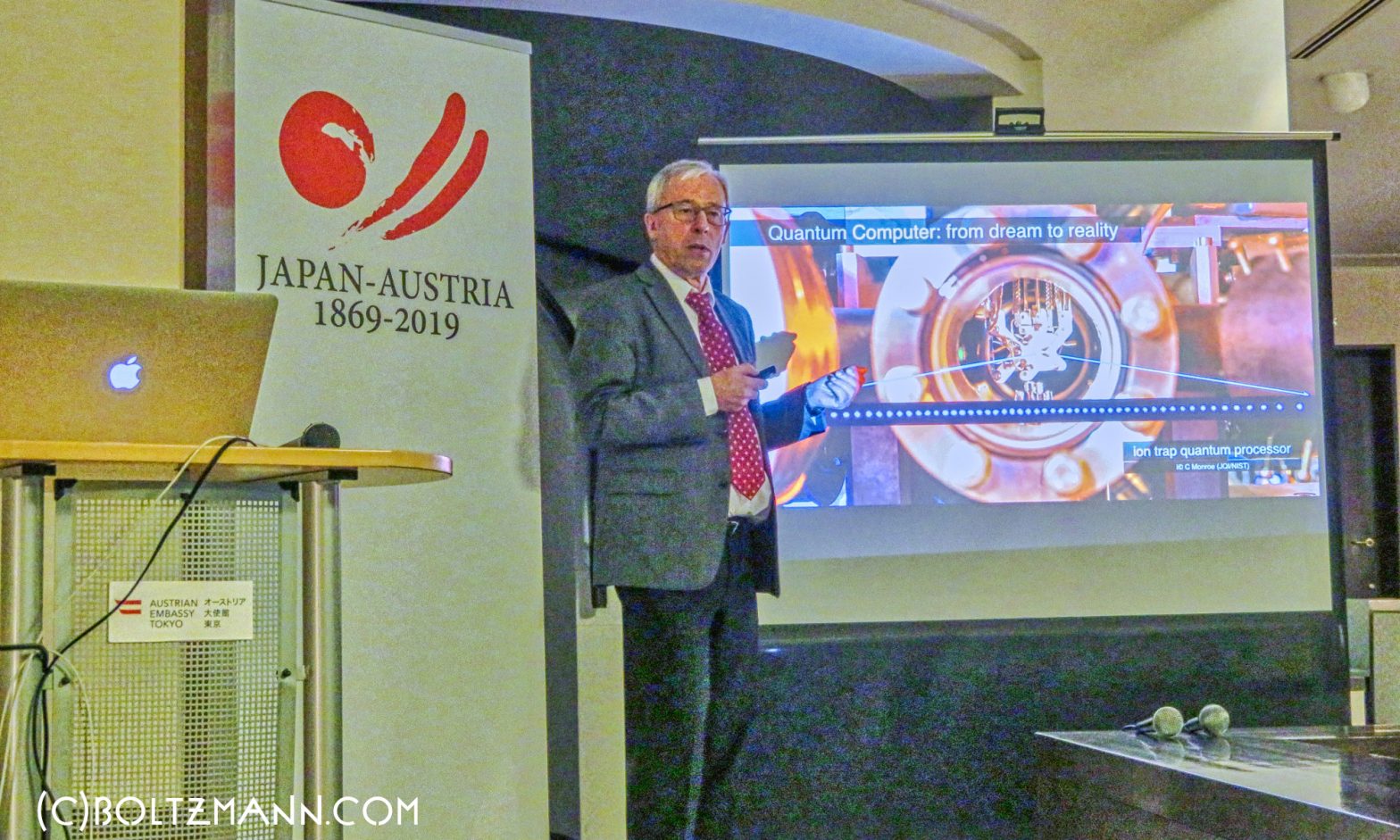
Peter Zoller: Quantum Computing and Quantum Simulation with Cold Atoms
Quantum Computing and Quantum Simulation with Cold Atoms, 11th Ludwig Boltzmann Forum 20 February 2019 Peter Zoller, University of Innsbruck, Professor of Physics, Director at the Institute for Quantum Optics and Quantum Information summary written by Gerhard Fasol Entanglement and Schrödinger’s cat In his 1935 article, “Die gegenwärtige Situation der Quantenmechanik” Erwin Schrödinger introduced “Schrödinger’s…
-
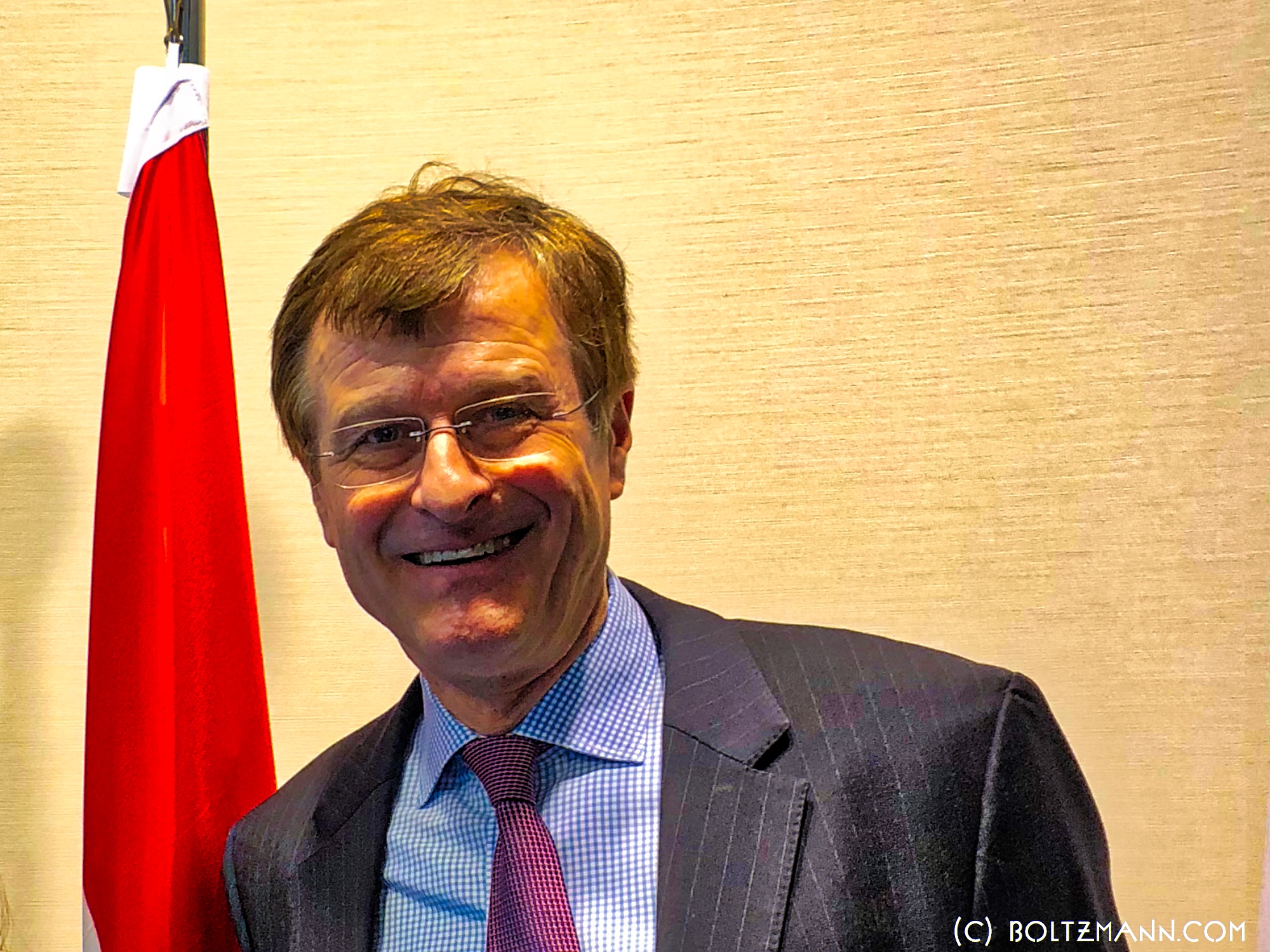
Gerhard Fasol: Entropy, information and Ludwig Boltzmann
Entropy, information and Ludwig Boltzmann, 10th Ludwig Boltzmann Forum 20 February 2018 Gerhard Fasol CEO, Eurotechnology Japan KK, Board Director, GMO Cloud KK. former faculty Cambridge University and past Fellow, Trinity College Cambridge Ludwig Boltzmann 20 February 1844 – 5 September 1906 We use Ludwig Boltzmann’s results every day. Here are some examples: The definition…
-
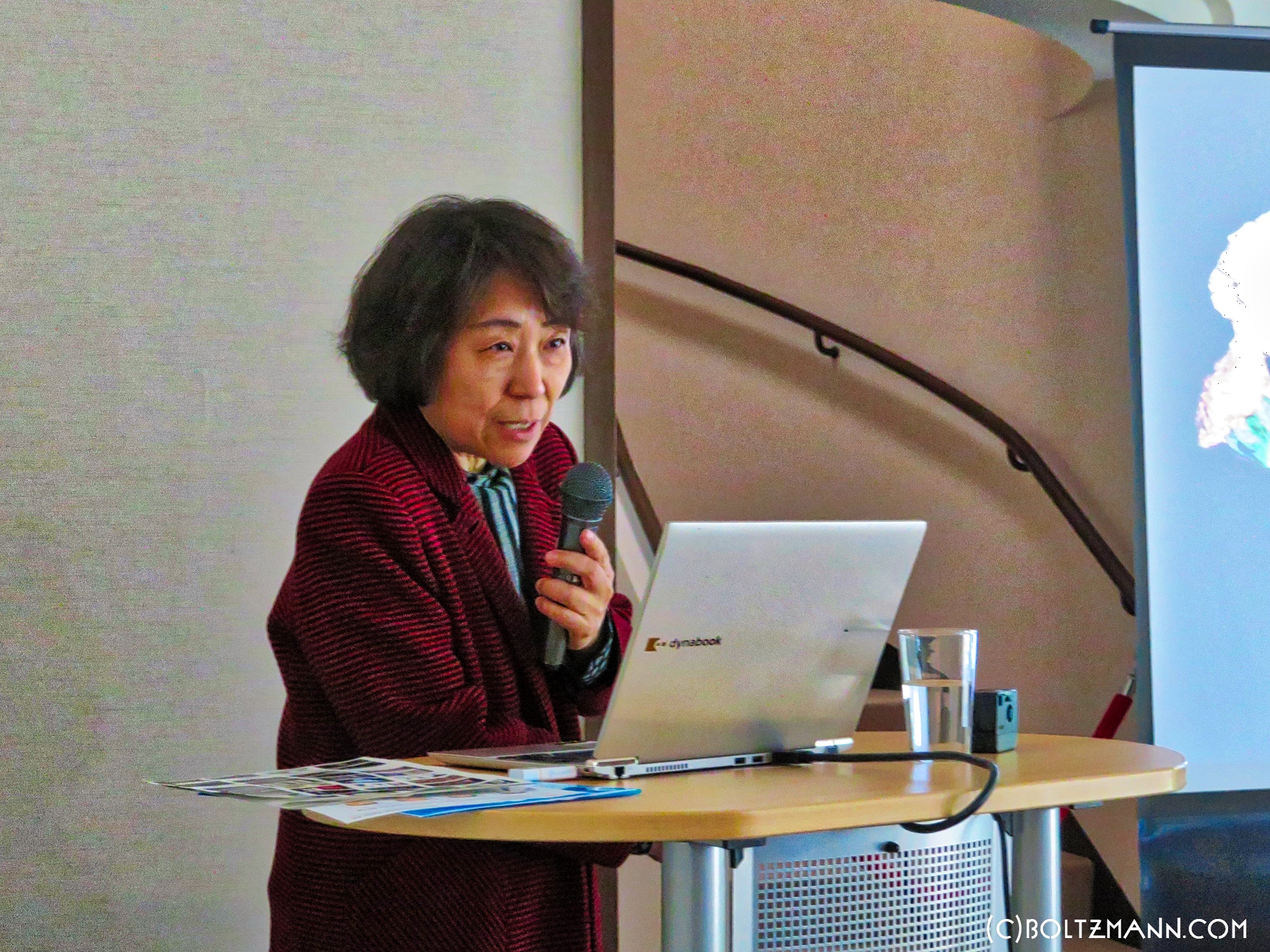
Tomoko Nakanishi: What is revealed by radiation in living plants
What is revealed by radiation in living plants, 10th Ludwig Boltzmann Forum 20 February 2018 Tomoko Nakanishi Commissioner, Japan Atomic Energy Commission, President, Japan Society for Nuclear and Radiochemical Sciences, Tokyo University Professor Copyright (c) 2018 Eurotechnology Japan KK All Rights Reserved
-
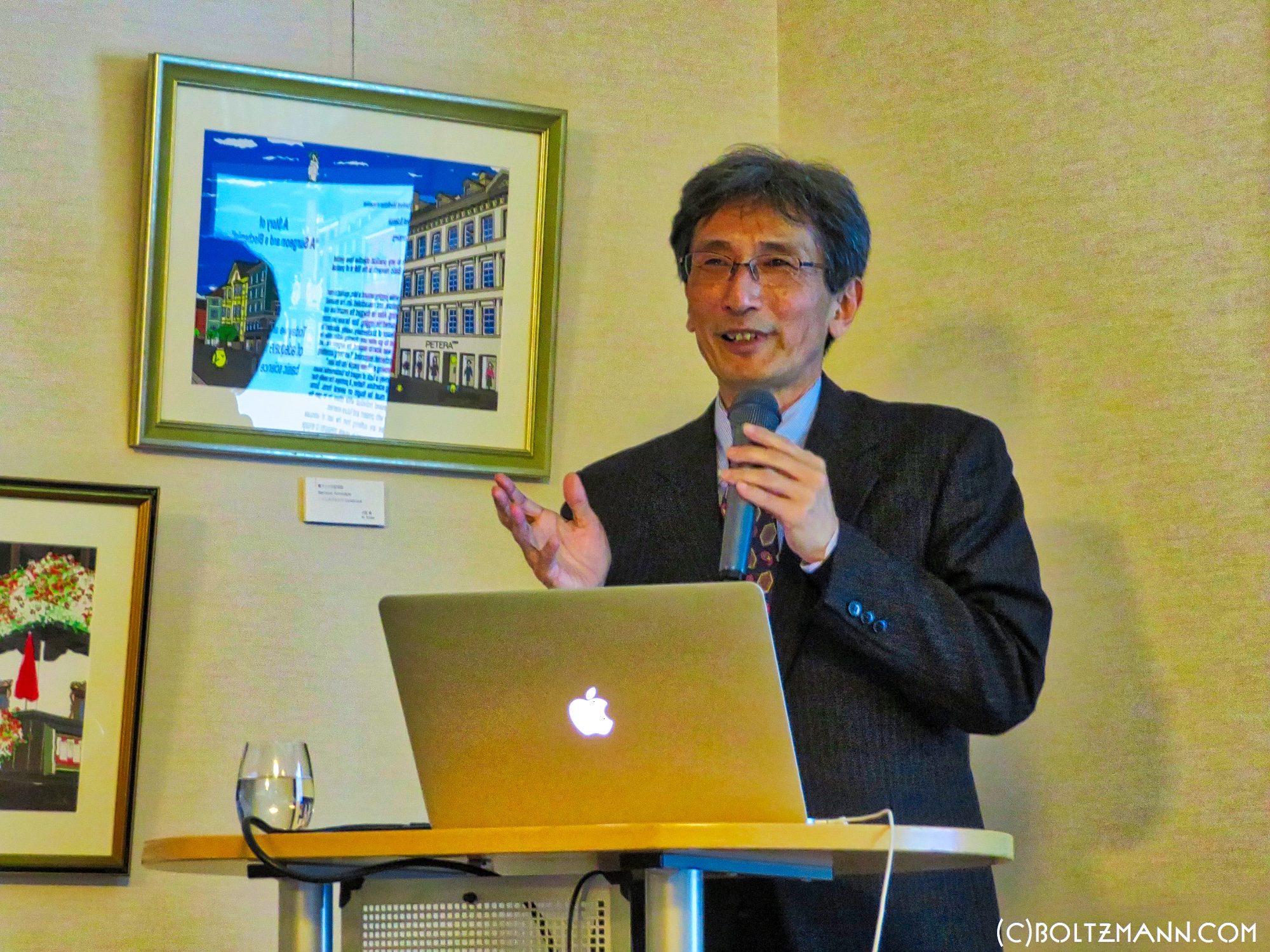
Hiroyuki Sasaki: Strategy and Serendipity in Science
Strategy and Serendipity in Science, 10th Ludwig Boltzmann Forum 20 February 2018 Hiroyuki Sasaki, Vice-President Kyushu University, Director of the Epigenome Network Research Center, Professor, Medical Institute of Bioregulation Copyright (c) 2018 Eurotechnology Japan KK All Rights Reserved
-
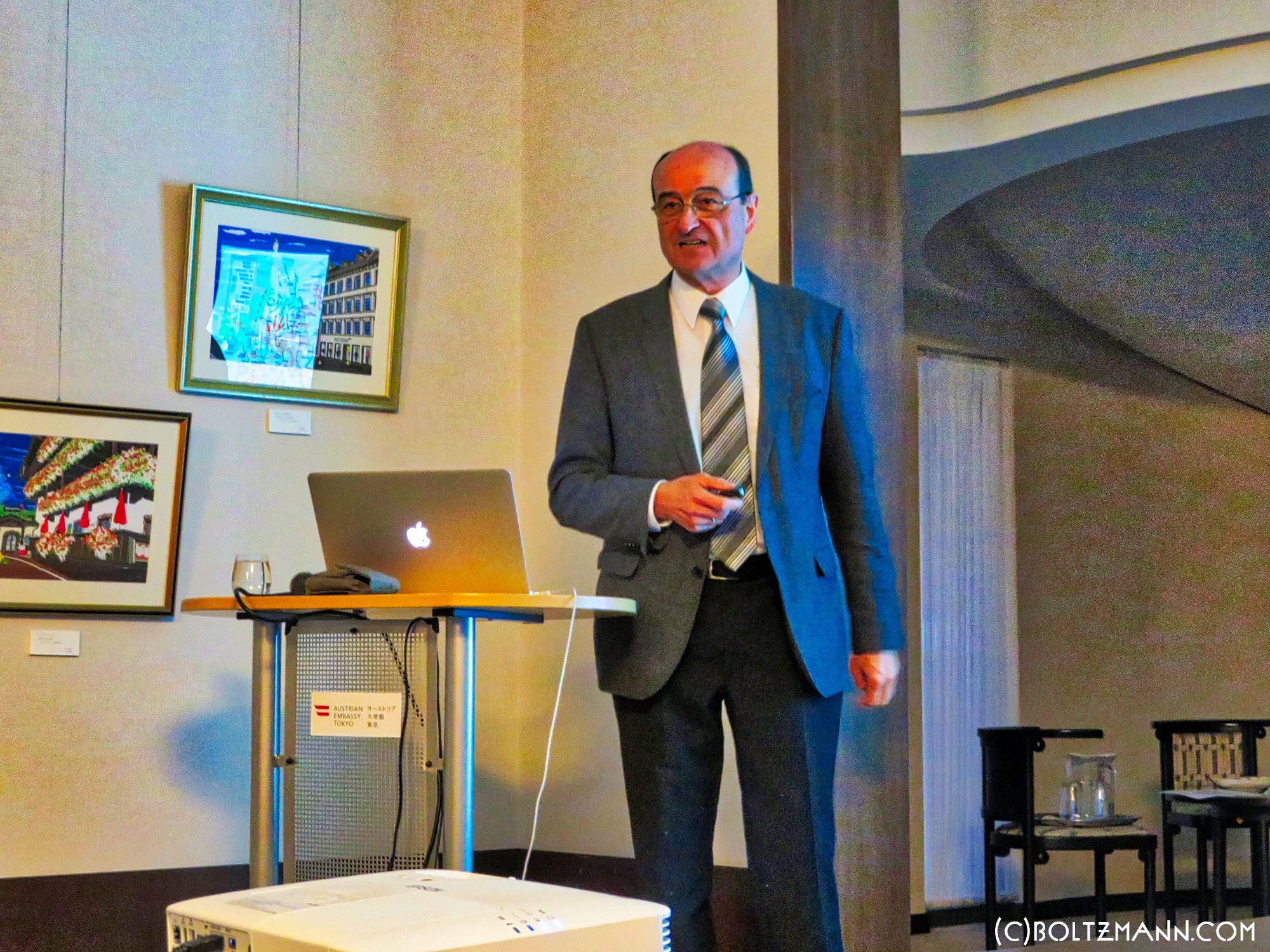
Wolfgang Kautek: Nanotechnology and critical raw materials
Nanotechnology and critical raw materials, 10th Ludwig Boltzmann Forum 20 February 2018 Wolfgang Kautek, Professor for Physical Chemistry at University of Vienna, Member of Scientific Board of Austrian Research Associations, President of the Erwin Schrödinger Society for Nanosciences (ESG), Chairman of the Research Group “Physical Chemistry” of the Austrian Chemical Society (GÖCh) Modern nanotechnology is…
-
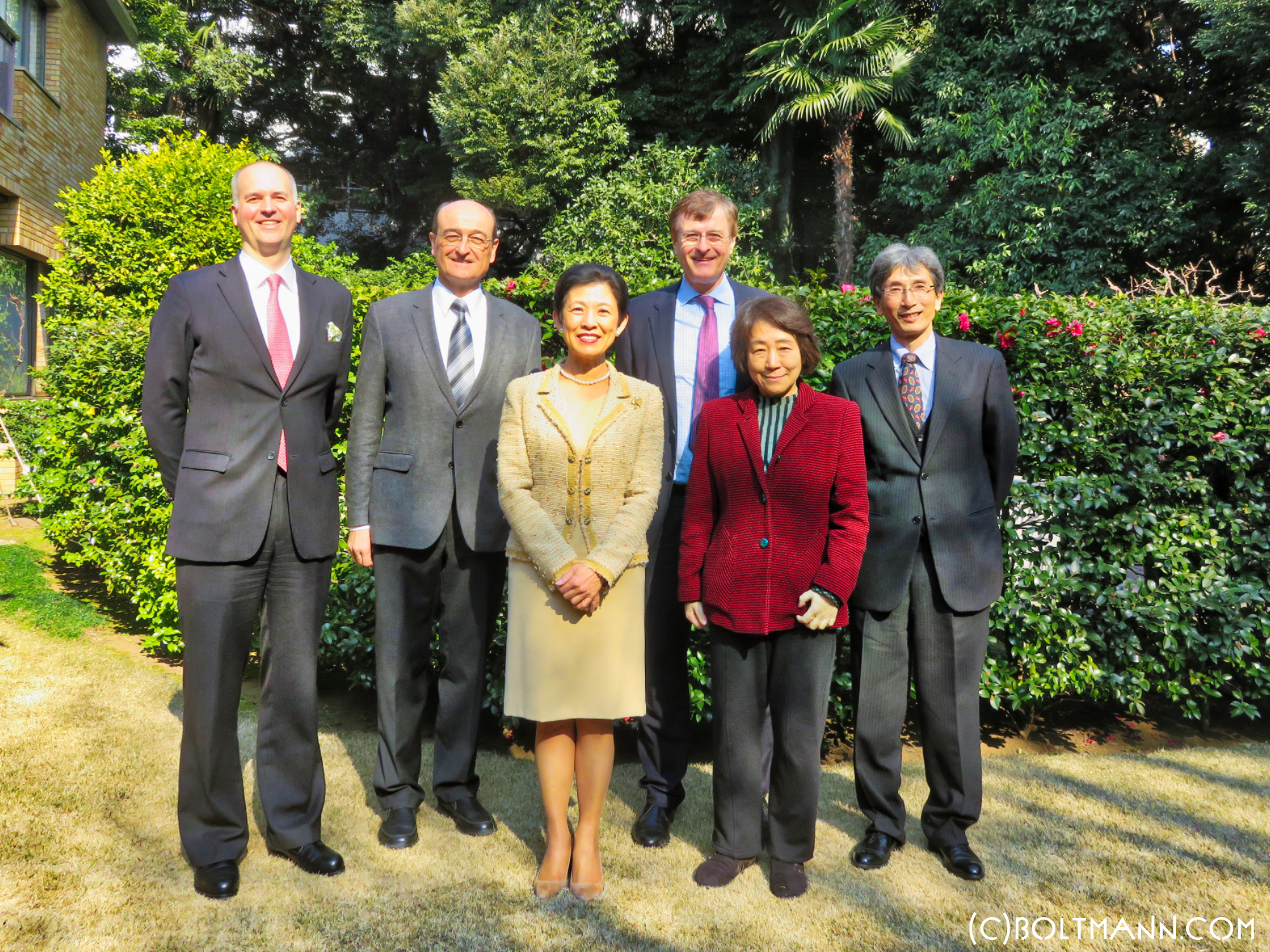
10th Ludwig Boltzmann Forum Tokyo 2018
Energy. Entropy. Leadership. Gerhard Fasol, Chair 10th Ludwig Boltzmann Forum 2018, Tuesday 20 February 2018 at the Embassy of Austria in Tokyo Program Welcome by the Ambassador of Austria, represented by Magister Konstantin Saupe (Embassy of Austria) Gerhard Fasol CEO Eurotechnology Japan KK, Board Director GMO Cloud KK, Guest-Professor Kyushu University, former faculty Cambridge University…
-
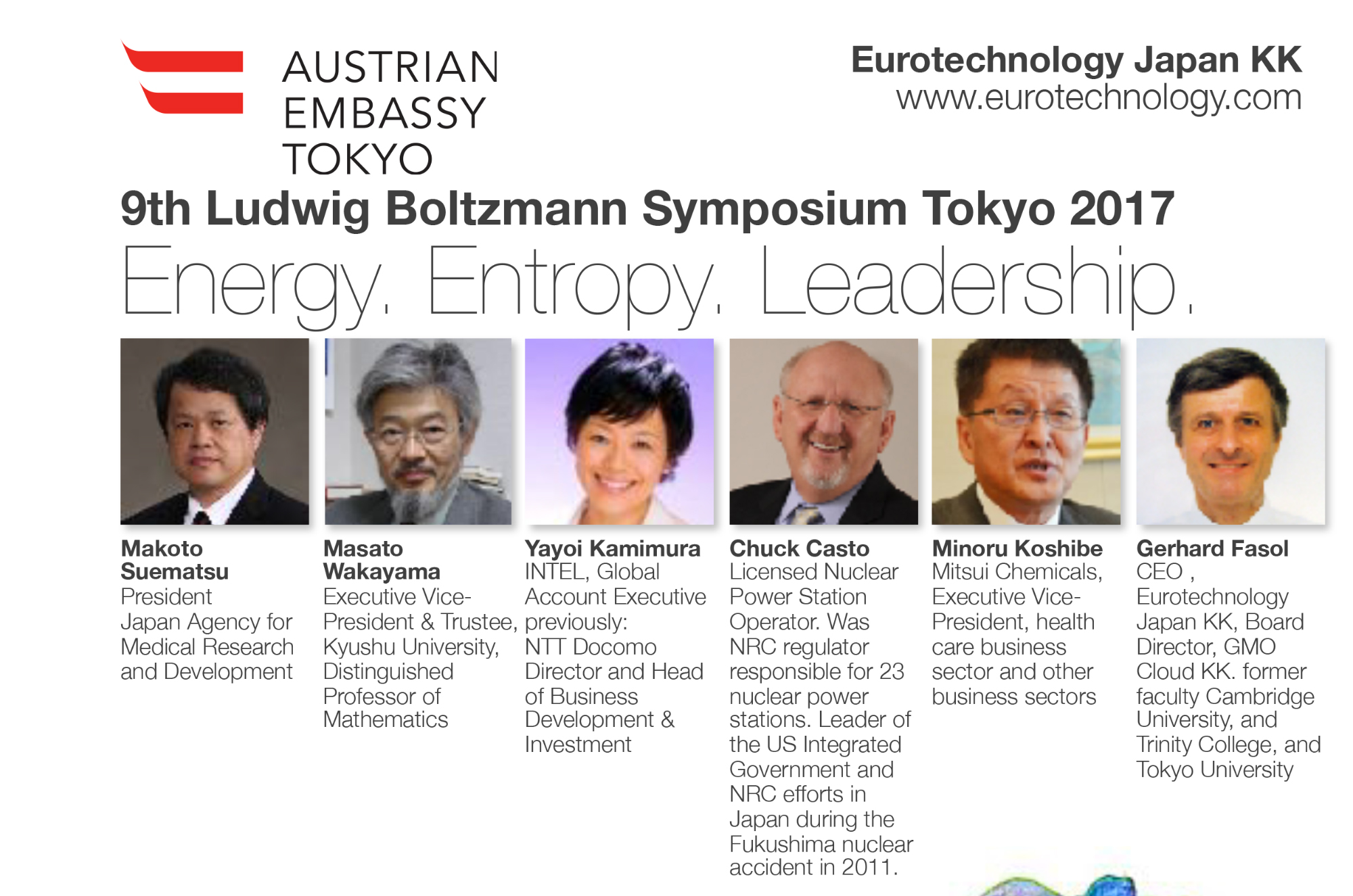
9th Ludwig Boltzmann Forum Tokyo 2017
Energy. Entropy. Leadership. Gerhard Fasol, Chair 9th Ludwig Boltzmann Forum 2017, Thursday 16 February 2017, at the Embassy of Austria in Tokyo Program Welcome by the Ambassador of Austria Gerhard Fasol CEO, Eurotechnology Japan KK, Board Director, GMO Cloud KK. former faculty Cambridge University and past Fellow, Trinity College Cambridge “Entropy, information and Ludwig Boltzmann”…
-
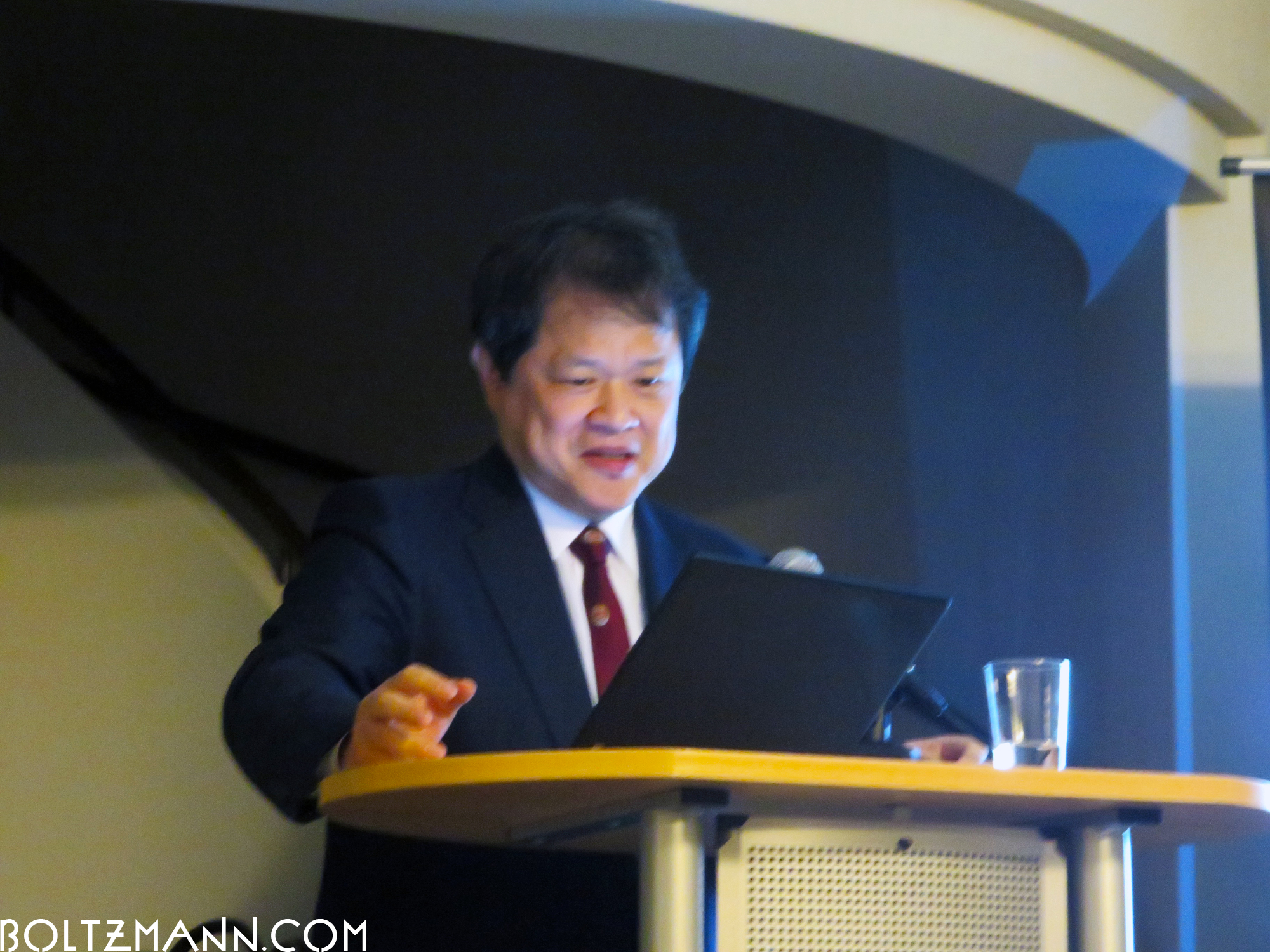
Makoto Suematsu: AMED challenges for global data sharing
AMED challenges for global data sharing Makoto Suematsu keynote talk given at 9th Ludwig Boltzmann Forum, Embassy of Austria in Tokyo, 16 March 2017 by Makoto Suematsu, President, Japan Agency for Medical Research and Development (AMED) Summary written by Gerhard Fasol We share data in space science, why don’t we share data and expensive equipment…
-
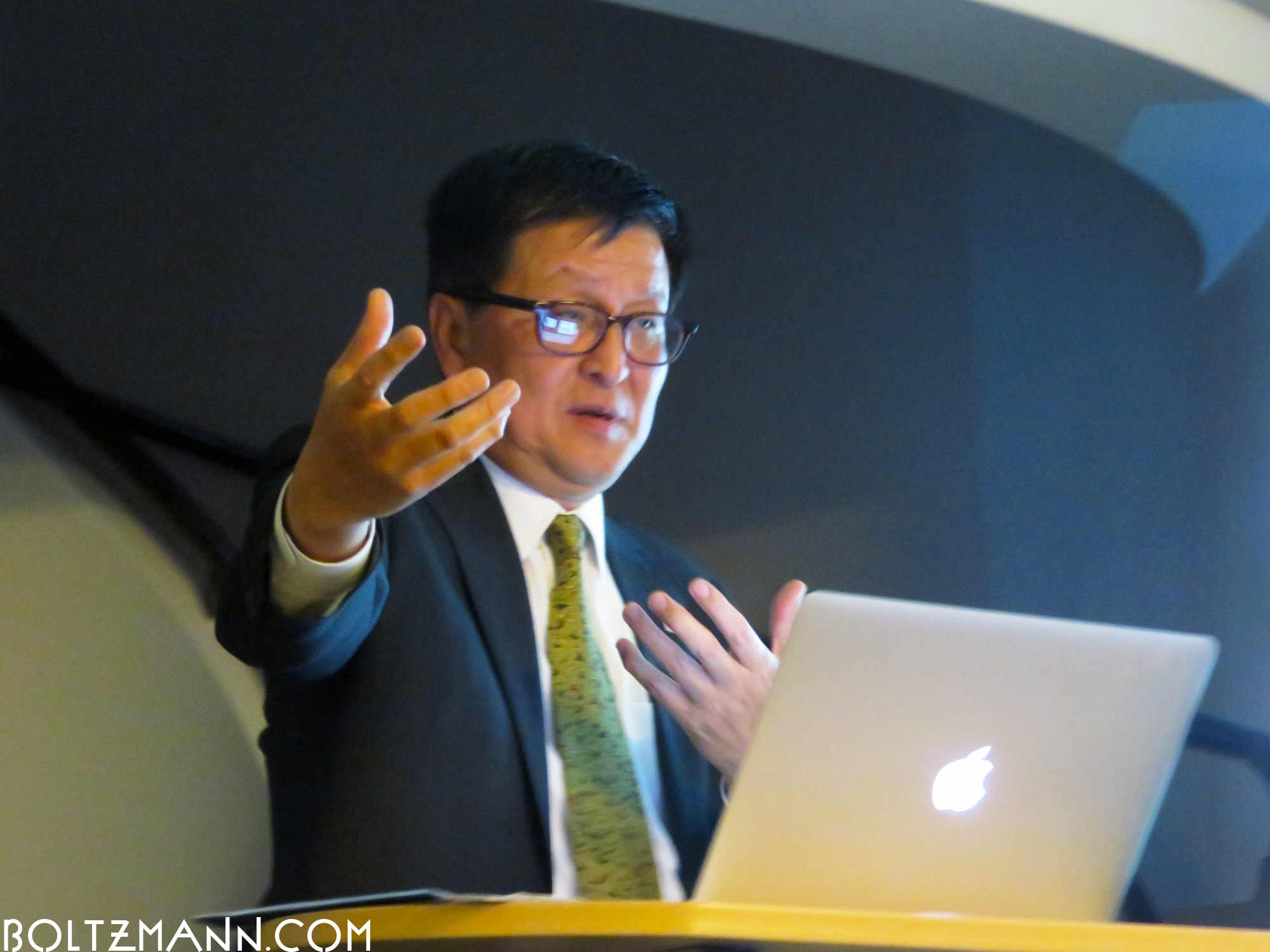
Minoru Koshibe: Growth and innovation at Mitsui Chemicals
Growth and innovation at Mitsui Chemicals Minoru Koshibe keynote talk given at 9th Ludwig Boltzmann Forum, Embassy of Austria in Tokyo, 16 March 2017 Minoru Koshibe, Mitsui Chemicals, Executive Vice-President, health care business sector and other business sectors Summary written by Gerhard Fasol Minoru Koshibe – Profile Minoru Koshibe majored in protein crystallography with a…
-
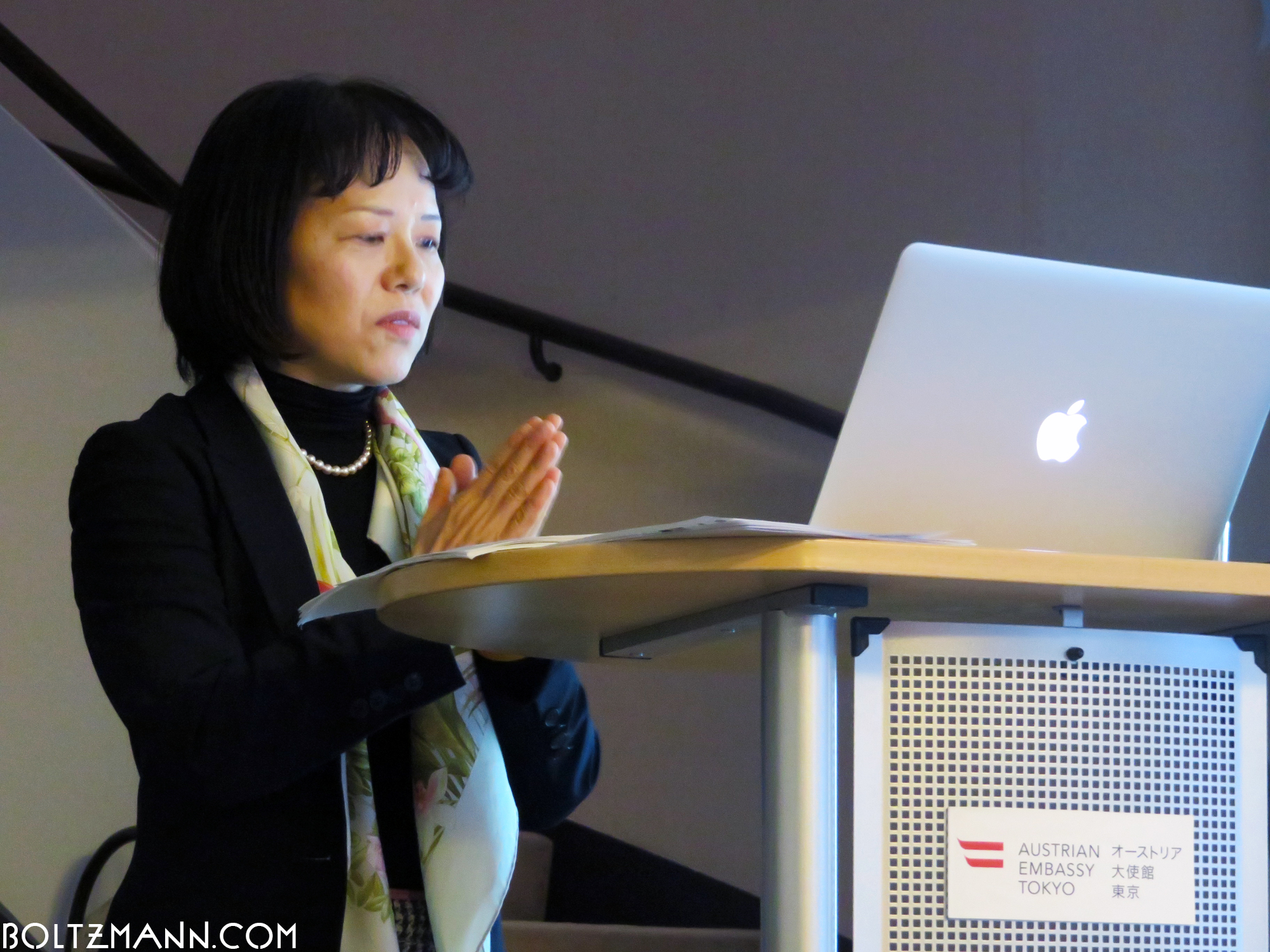
Yayoi Kamimura: Innovation – A style in Japan
Innovation – A style in Japan Yayoi Kamimura keynote talk given at 9th Ludwig Boltzmann Forum, Embassy of Austria in Tokyo, 16 March 2017 by Yayoi Kamimura INTEL, Global Account Executive, previously: NTT Docomo, Director and Head of Business Development & Investment Summary written by Gerhard Fasol Yayoi Kamimura – self introduction 20 years experience…
-
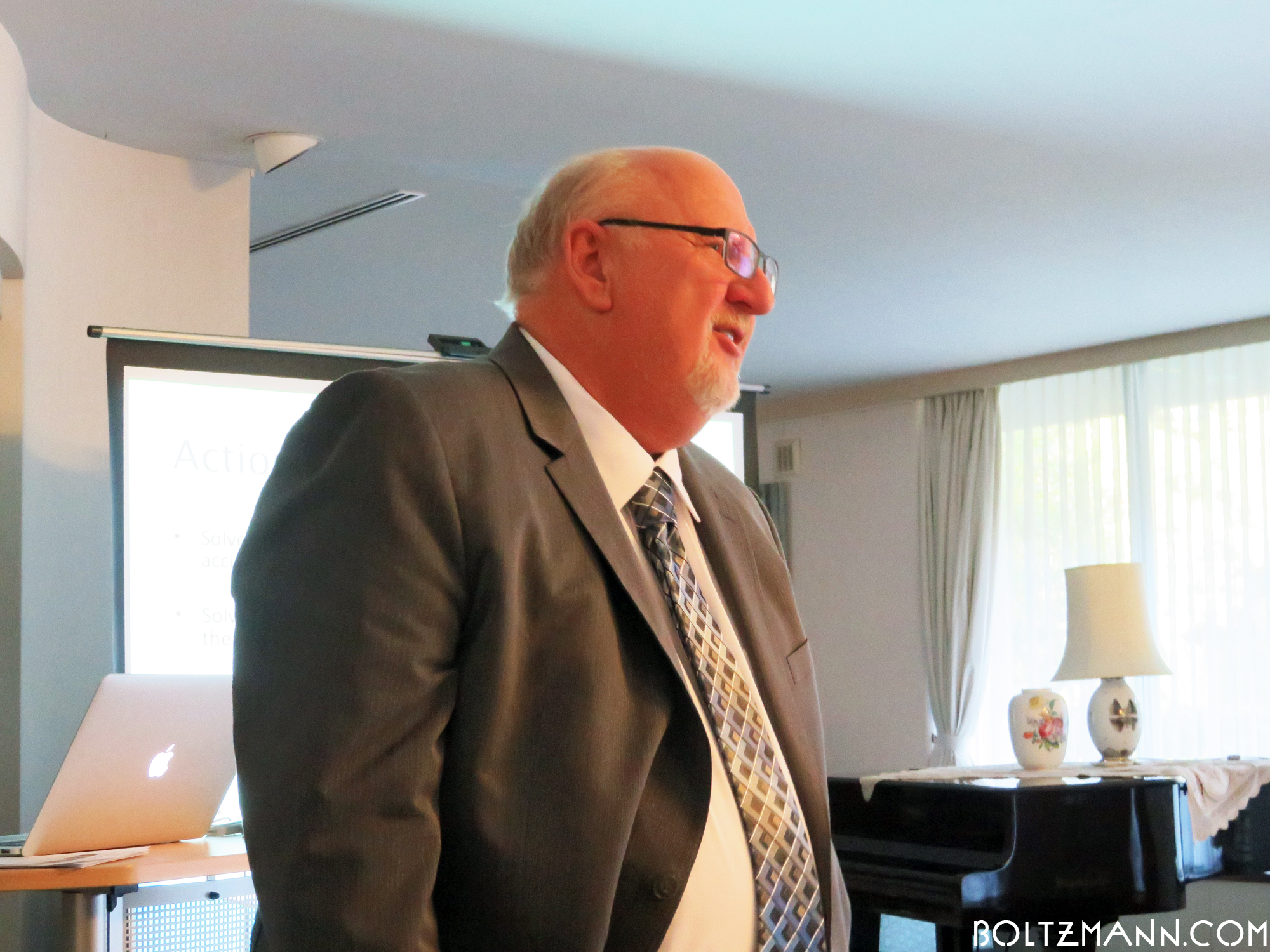
Chuck Casto: Balance of Nuclear Power Policy in Post-Fukushima Japan
Balance of Nuclear Power Policy in Post-Fukushima Japan Chuck Casto keynote talk given at 9th Ludwig Boltzmann Forum, Embassy of Austria in Tokyo, 16 March 2017 by Chuck Casto Licensed Nuclear Power Station Operator. Was NRC regulator responsible for 23 nuclear power stations. Leader of the US Integrated Government and NRC efforts in Japan during…
-
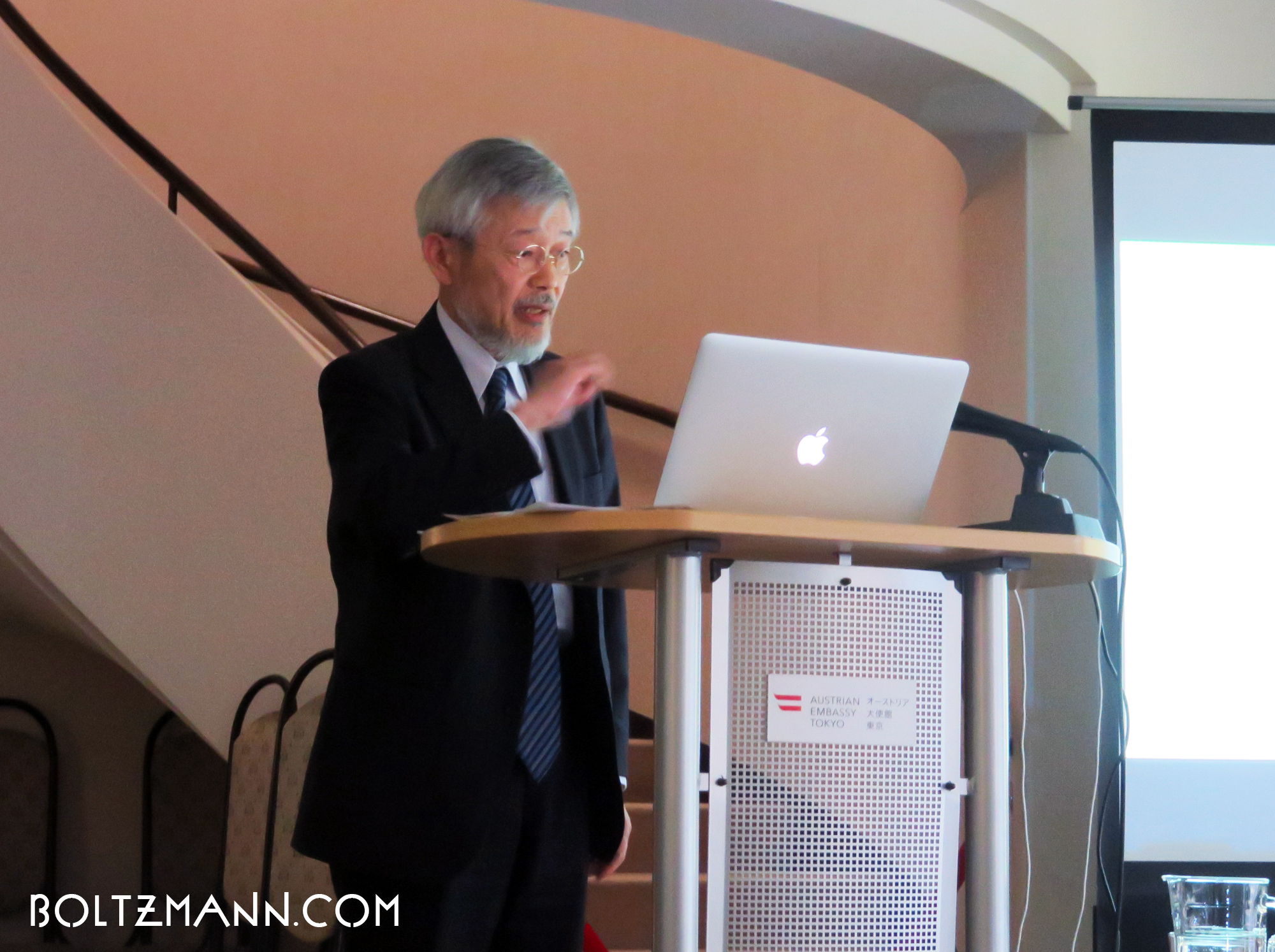
Masato Wakayama: Endeavors for Mathematics for Industry in Japan
Endeavors for Mathematics for Industry in Japan Masato Wakayama keynote talk given at 9th Ludwig Boltzmann Forum, Embassy of Austria in Tokyo, 16 March 2017 by Masato Wakayama Executive Vice-President & Trustee, Kyushu University, Distinguished Professor of Mathematics (Summary of Professor Masato Wakayama’s talk written by Gerhard Fasol) Two important energies: hydrogen energy and prime…
-

Gerhard Fasol: Entropy, information and Ludwig Boltzmann
Entropy, information and Ludwig Boltzmann Gerhard Fasol keynote talk given at 9th Ludwig Boltzmann Forum, Embassy of Austria in Tokyo, 16 March 2017 by Gerhard Fasol CEO, Eurotechnology Japan KK, Board Director, GMO Cloud KK. former faculty Cambridge University and past Fellow, Trinity College Cambridge We use Ludwig Boltzmann’s results every day. Here are some…
-
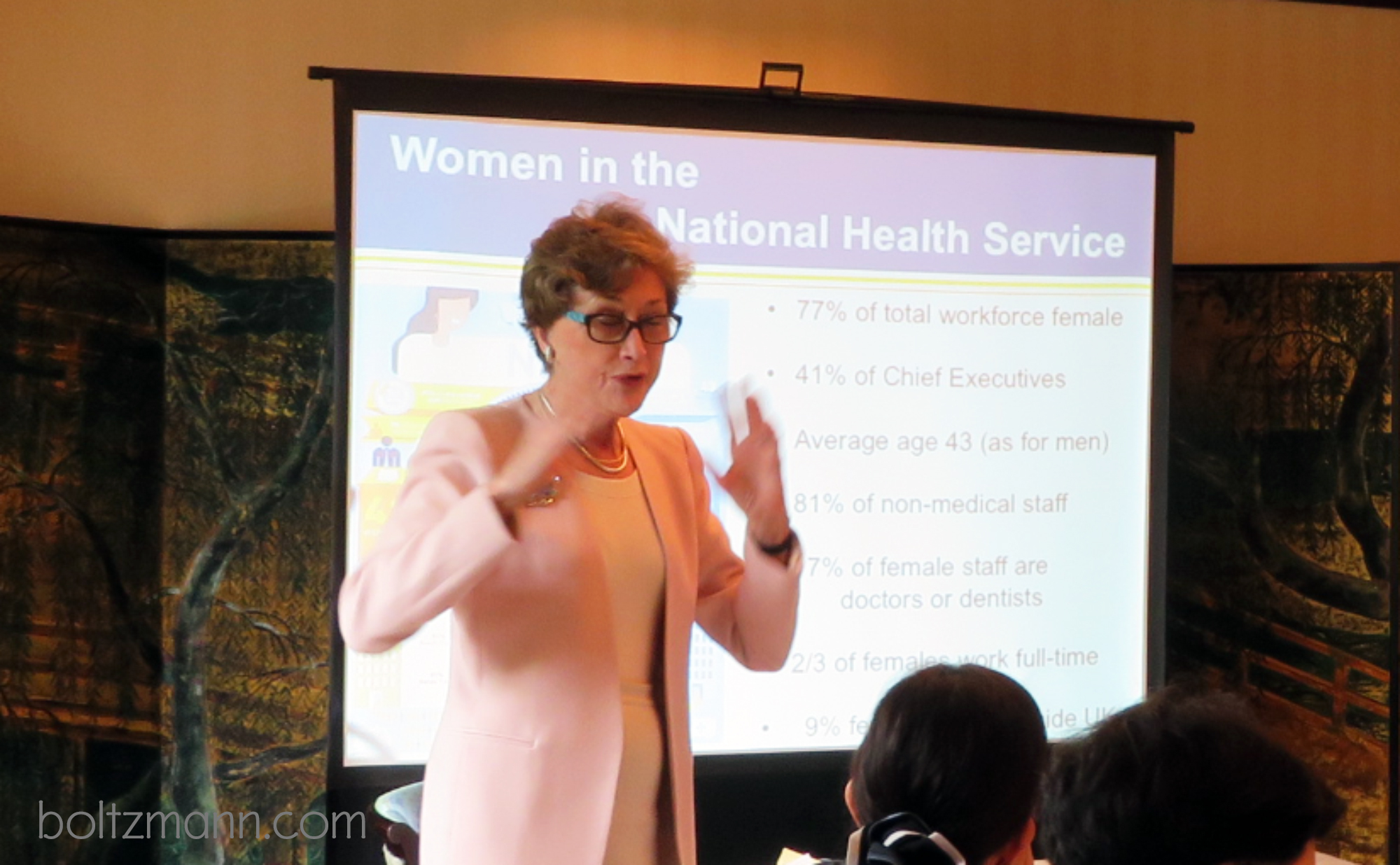
Dame Carol Black: Advancing women in healthcare
Advancing women in healthcare Dame Carol Black DBE FRCP FMedSci keynote given at the Ludwig Boltzmann Forum on women’s development and leadership, Tokyo, Monday 16 May 2016 by Dame Carol Black DBE FRCP FMedSci, Principal of Newnham College, Cambridge University, and Expert Adviser on Health and Work, Department of Health and Public Health England (Summary…